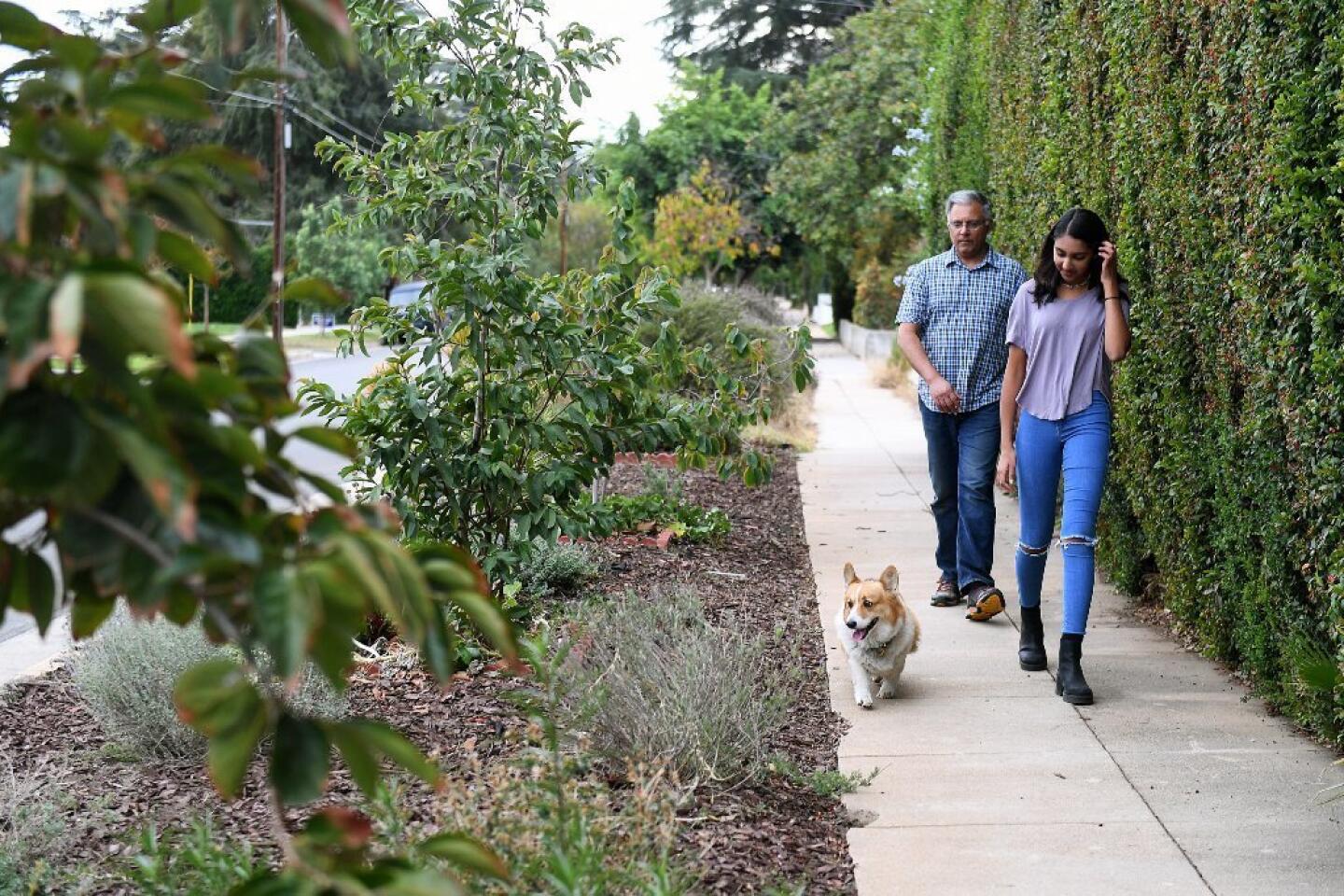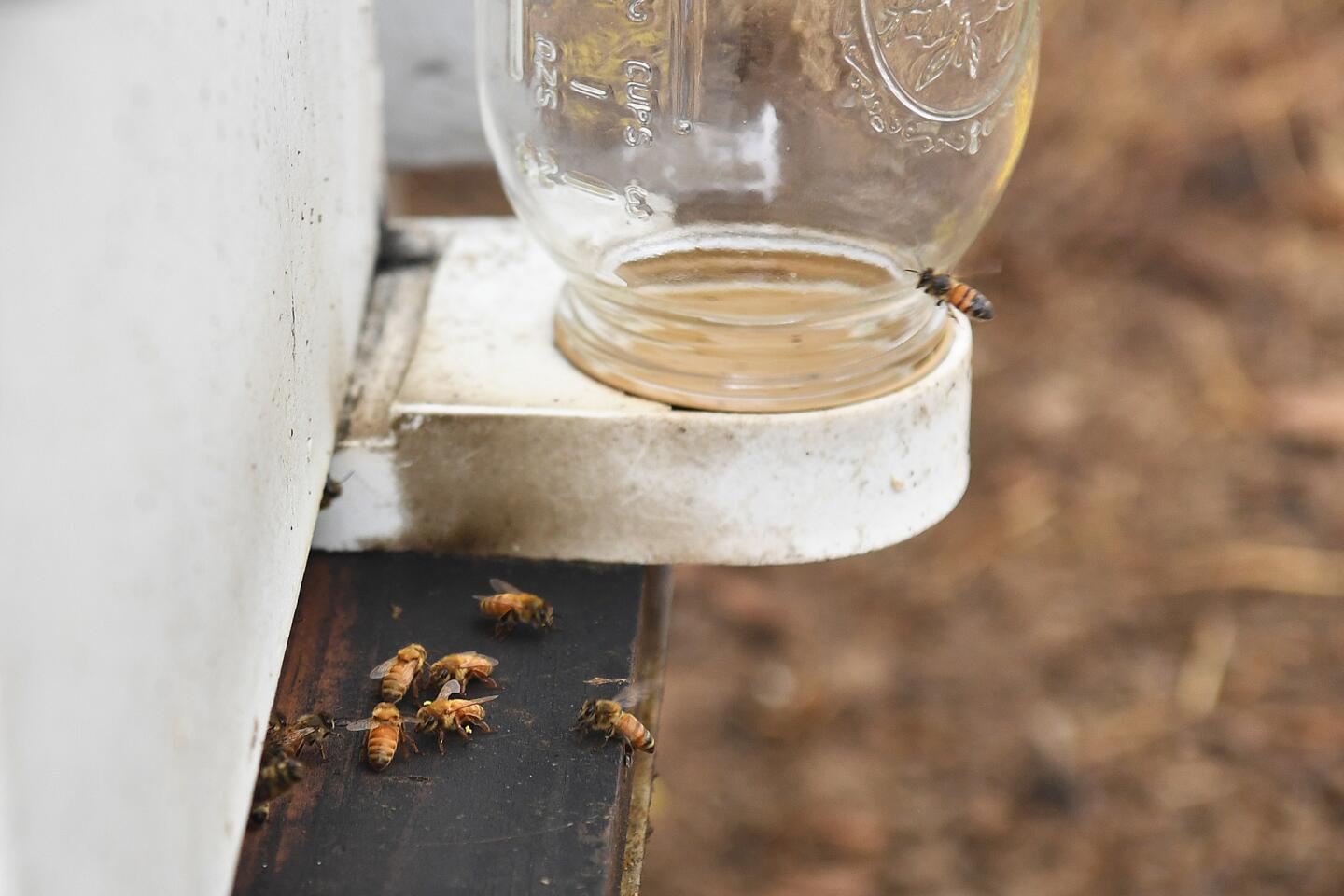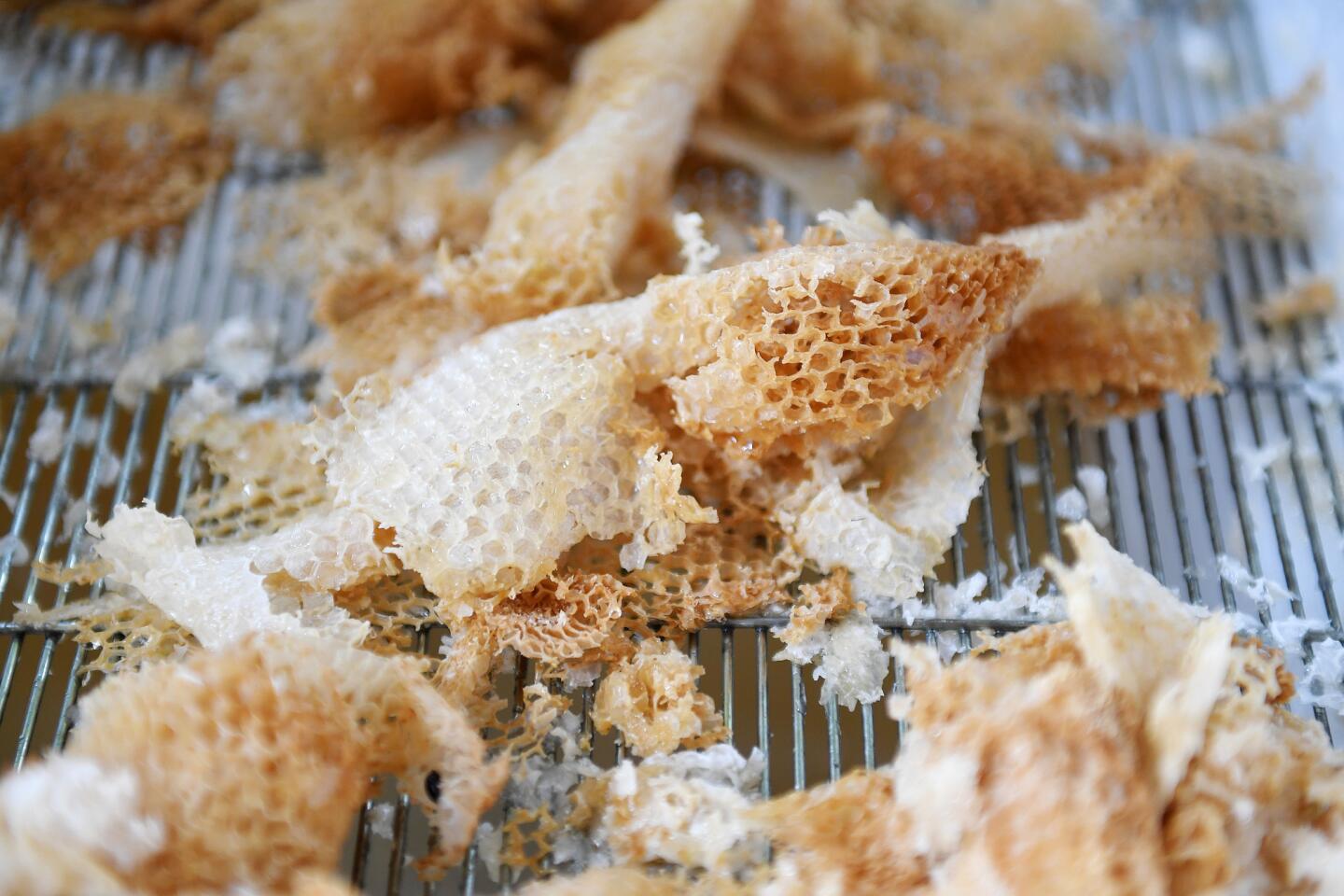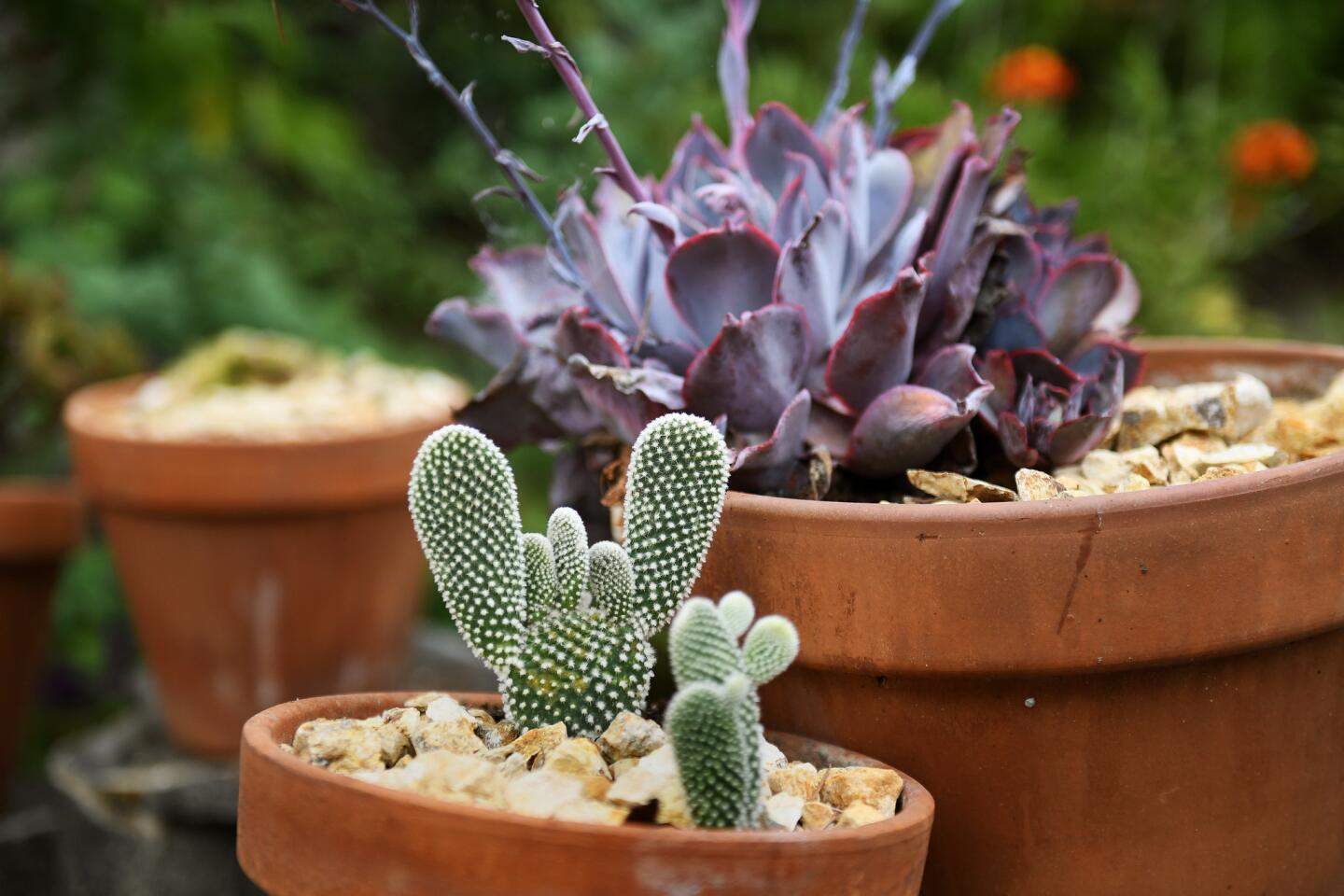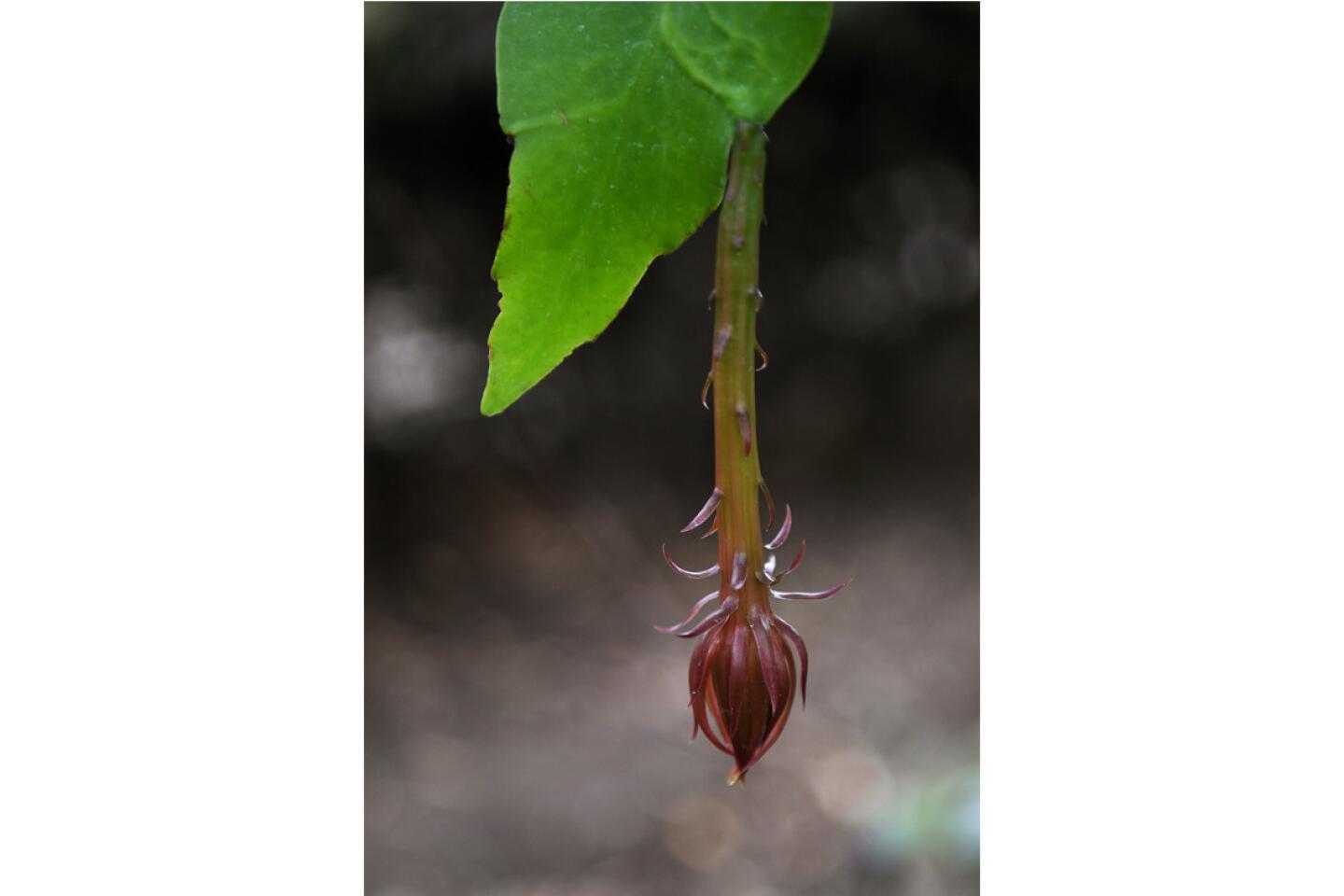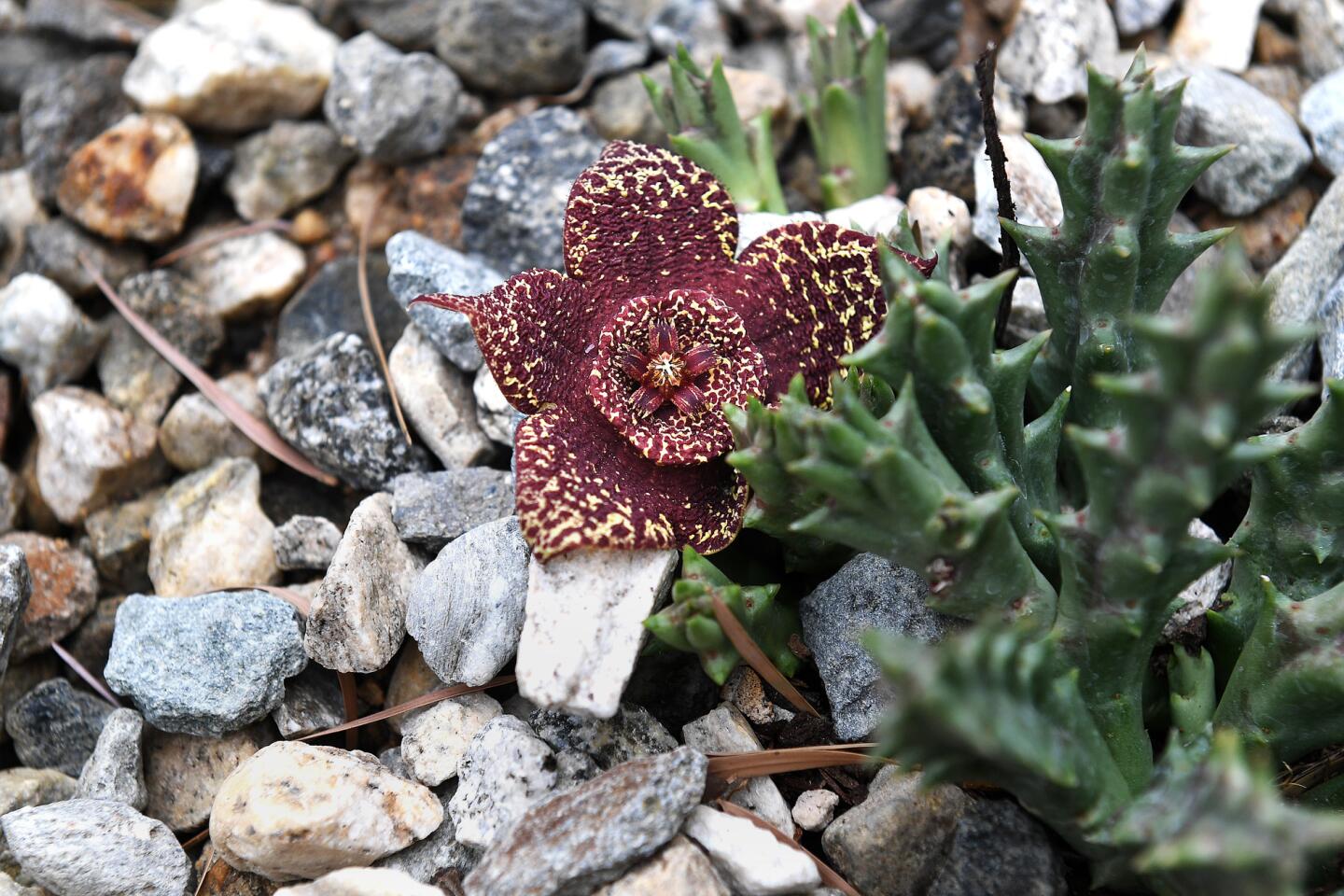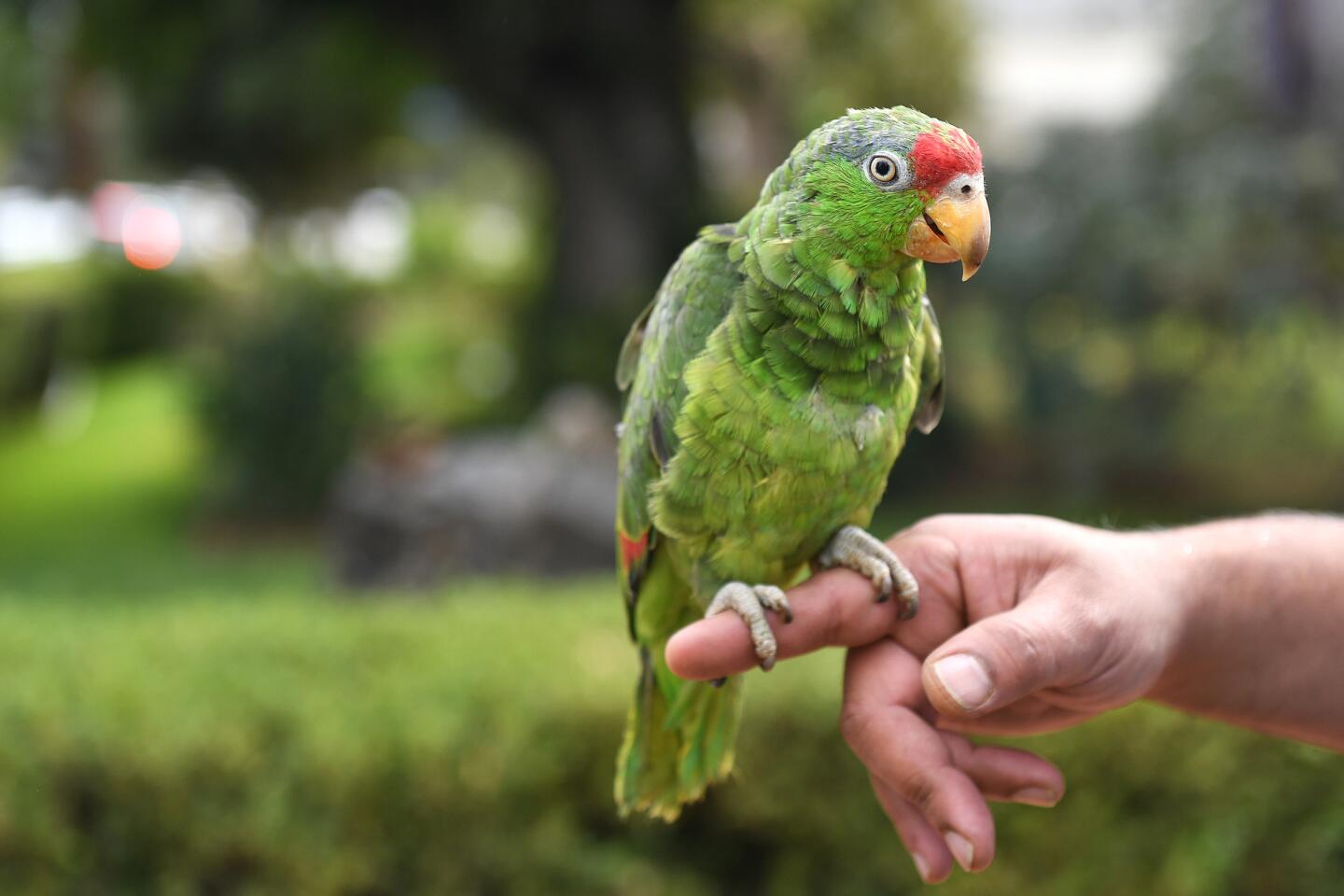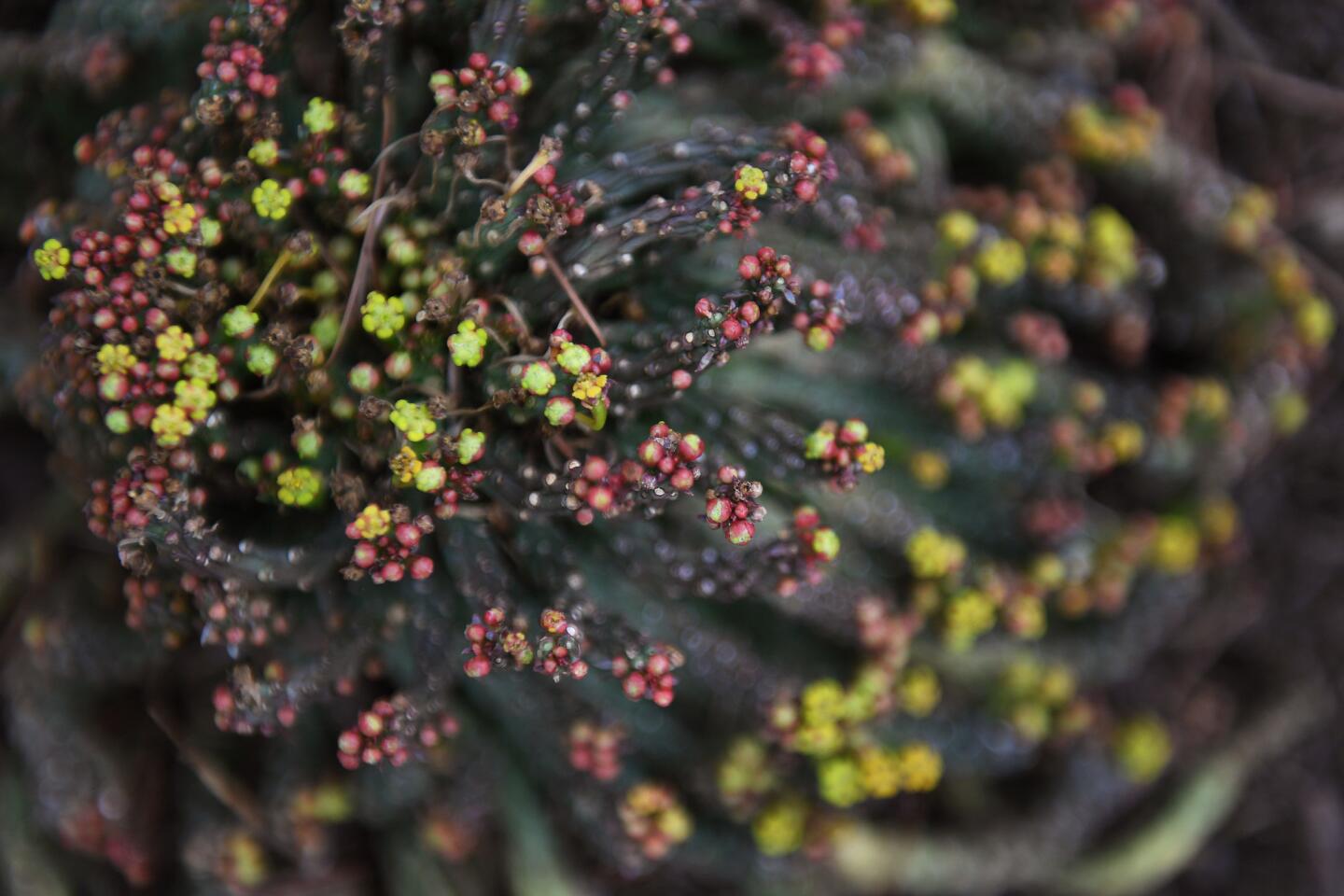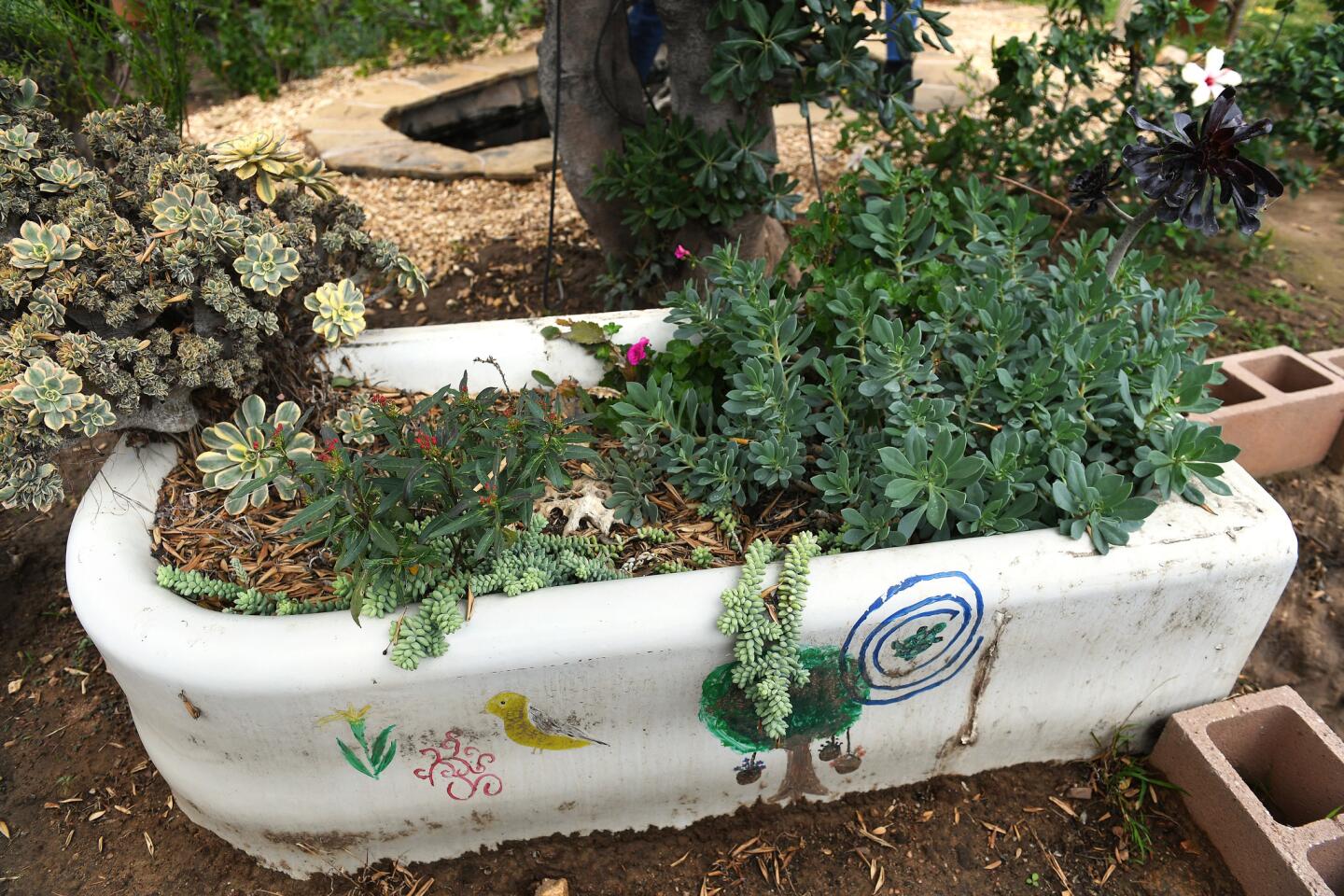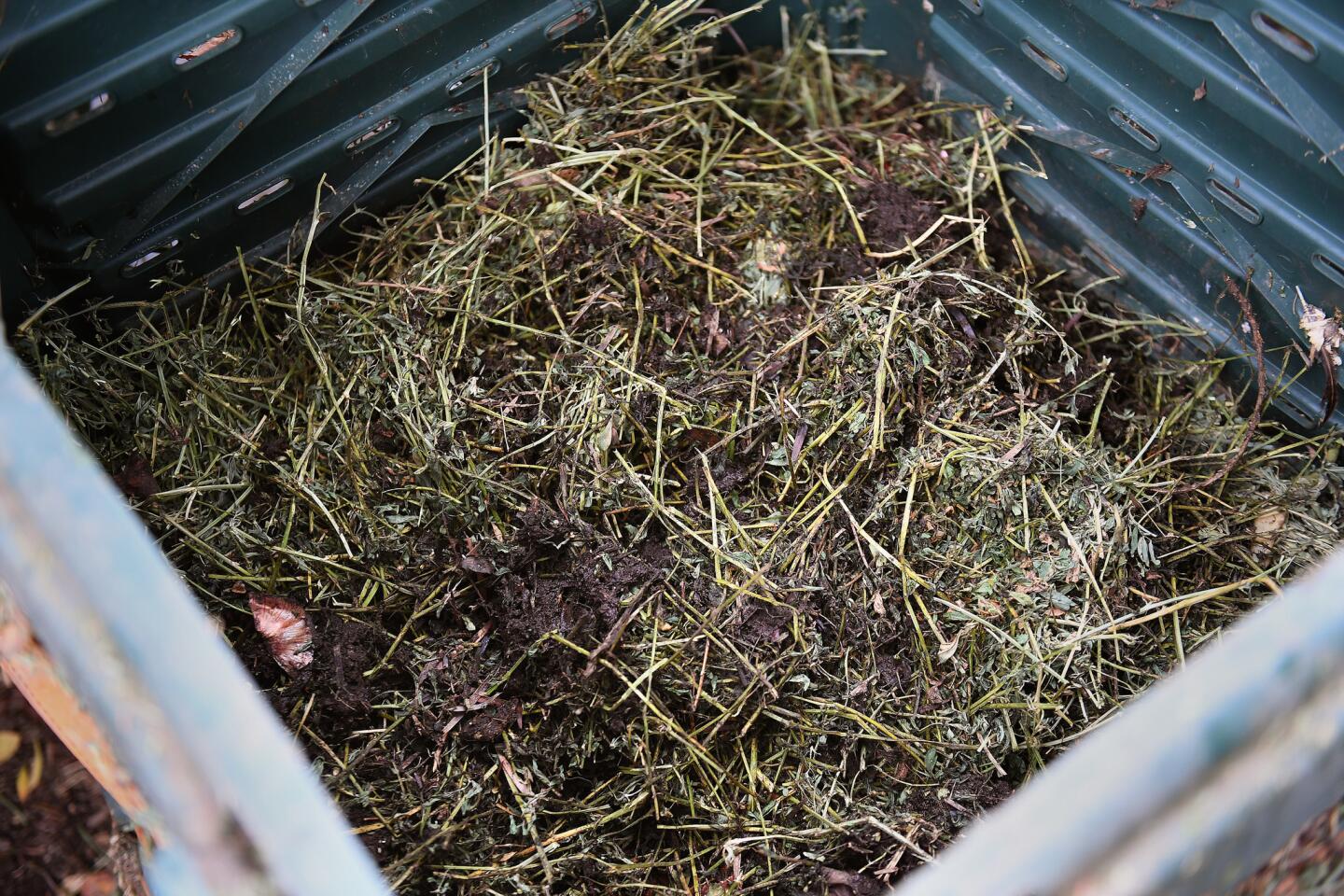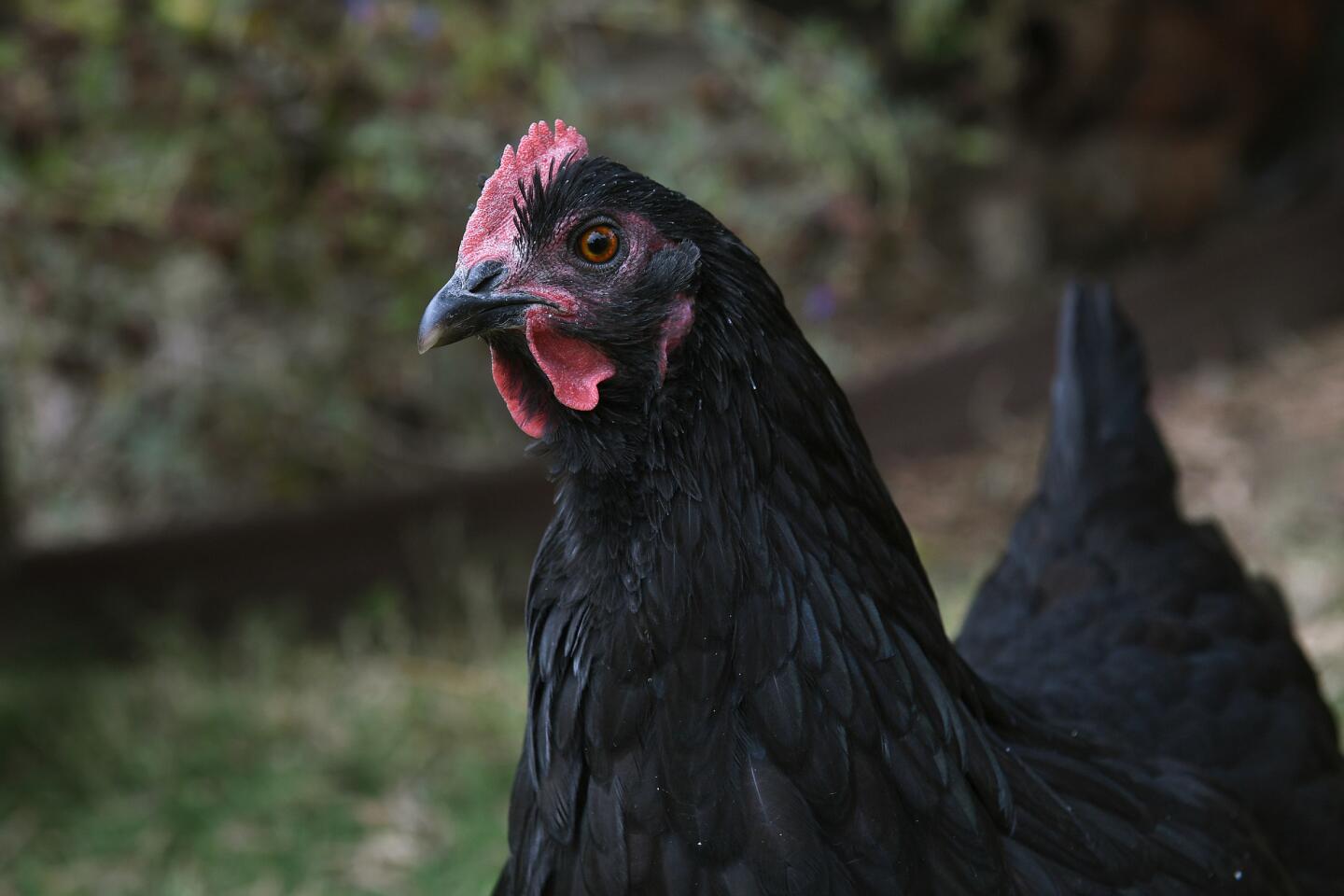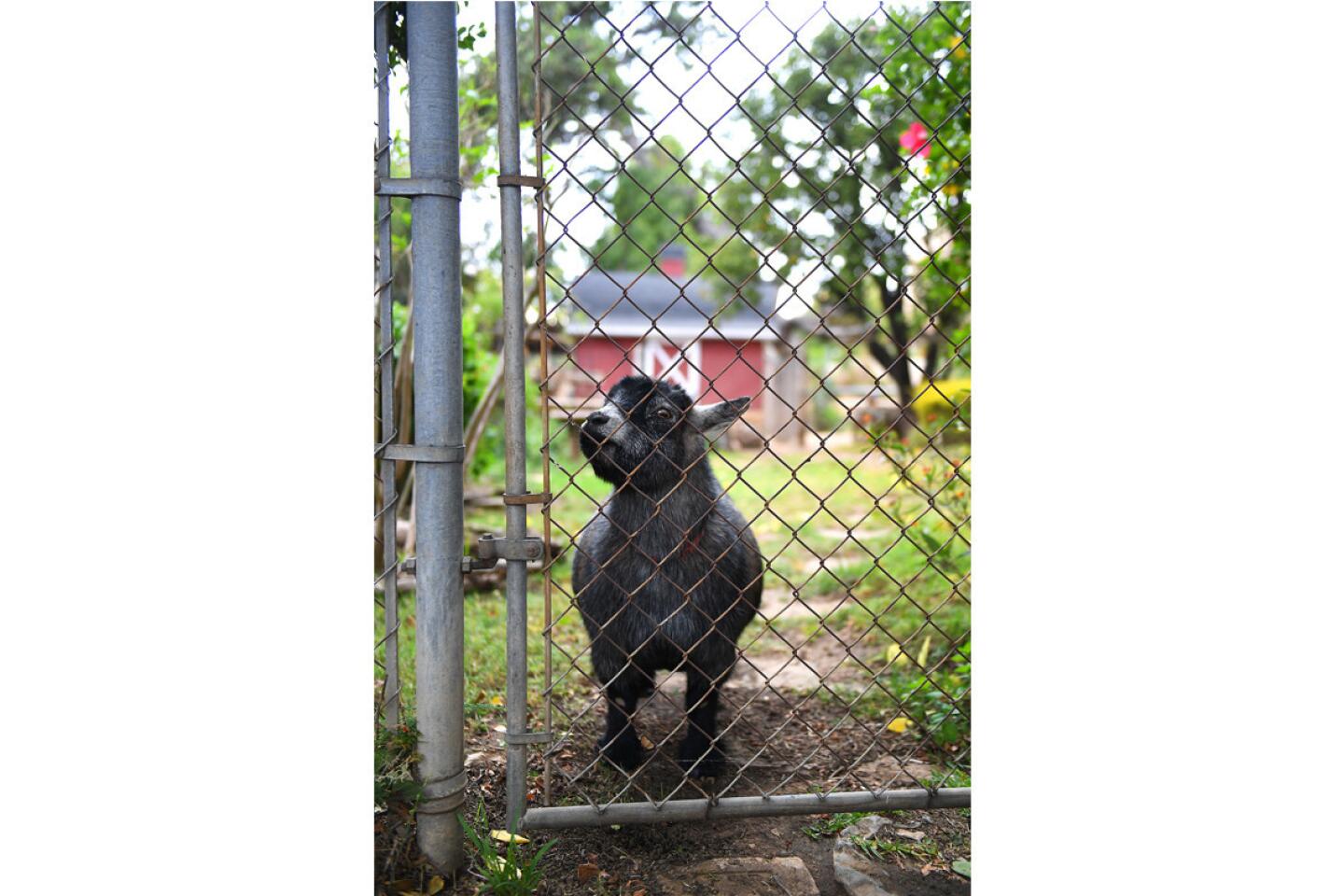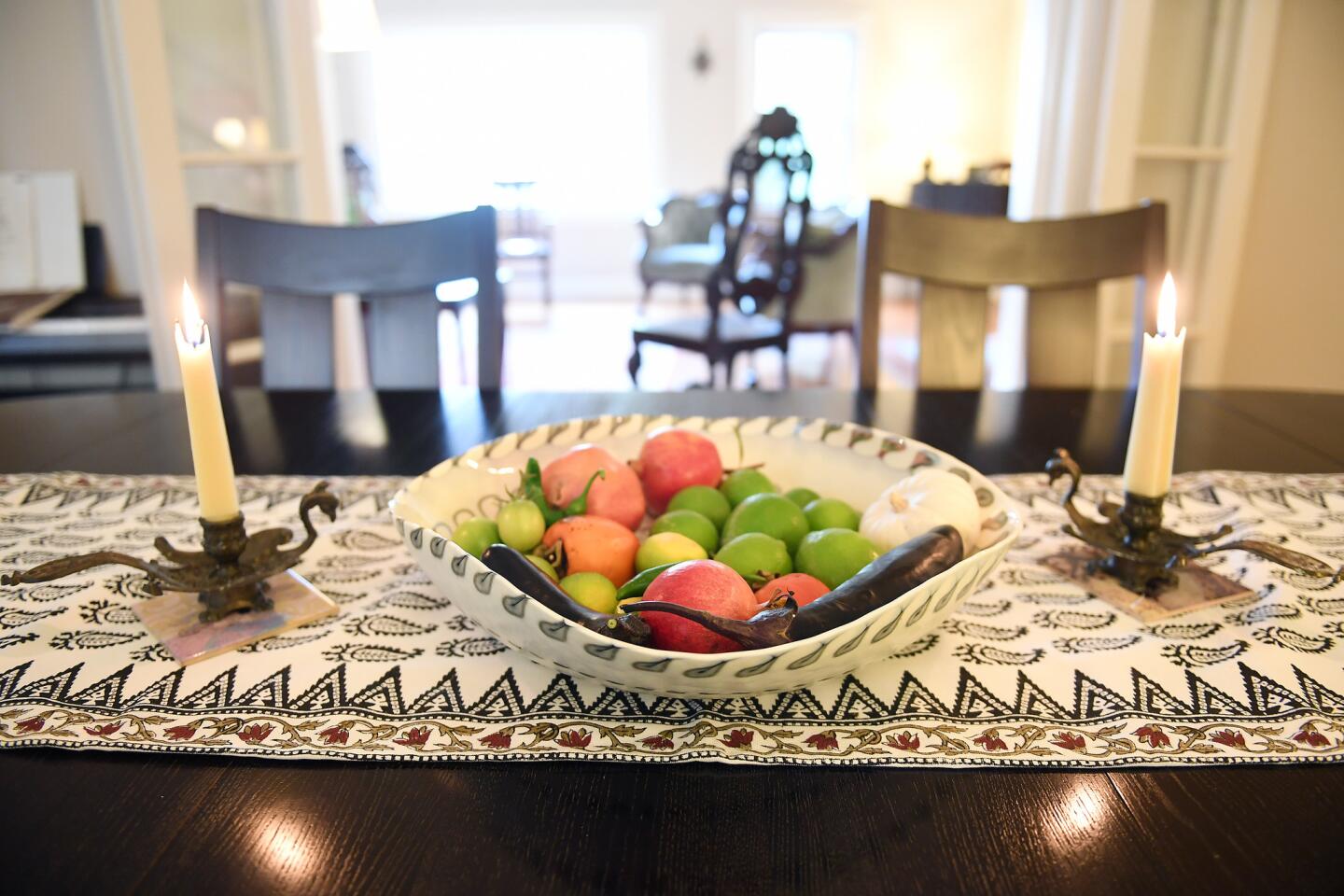This family is creating a zero-waste homestead in Altadena with goats, chickens and bees
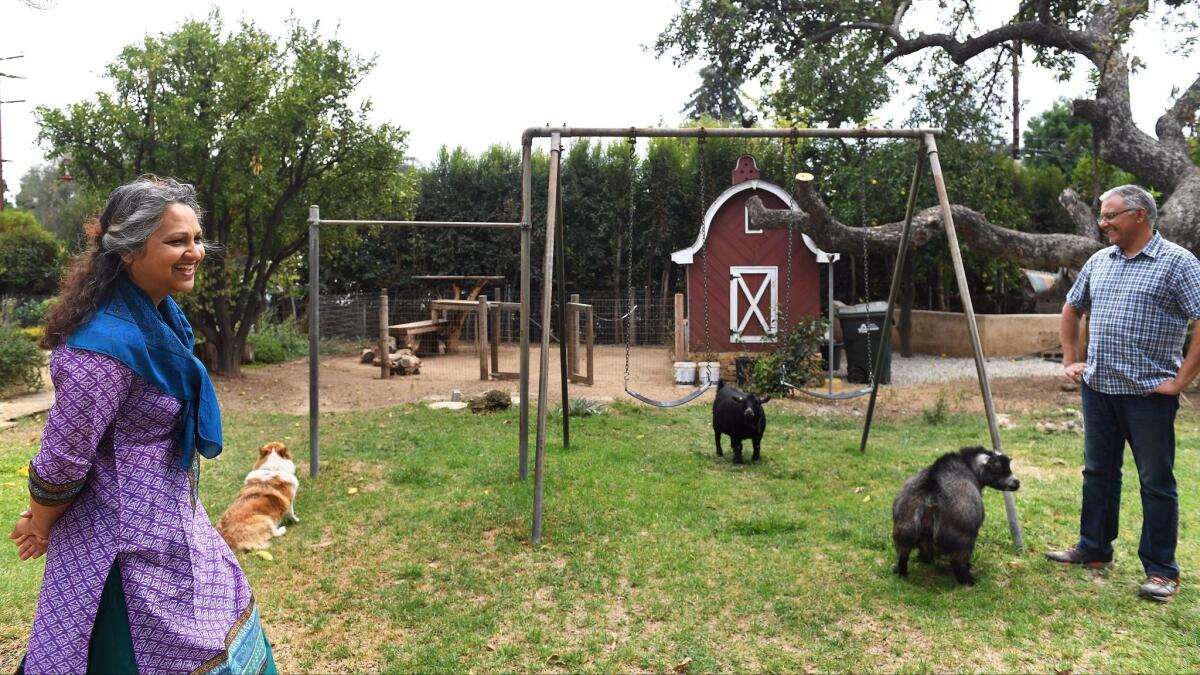
- Share via
While giving a tour of her family’s garden in Altadena, Choi Chatterjee stops suddenly. “The staghorns are coming back, Omer,” she calls to her husband as she surveys the frontyard. A moment later something else catches her eye. “Omer, your lilies are blooming again.”
Her excitement offers a hint of the connection between the two. But more than a love of gardening has rooted Chatterjee, a professor of history at Cal State L.A., and her husband, Omer Sayeed, a healthcare industry executive, to their property in Altadena.
The couple settled here in 2006 with daughters Shaheen and Damini and ever since have worked to create a zero-waste homestead that has grown to include two goats, eight chickens and a pair of rabbits.
As an unincorporated area of Los Angeles County that is free from restrictive zoning laws, Altadena has proved popular with urban homesteaders who want to keep horses, chickens and goats on their properties.
“For me, my life and my teaching are connected to what I’m doing at home,” Chatterjee says. “I feel that as an academic I can’t just speak. I must do. If I don’t, my words are meaningless.”
Their home’s transformation to urban homestead was pragmatic. When the couple wanted more compost to grow vegetables — squash, eggplant, tomatoes, collard greens and beets, among them — they added chickens to their backyard landscape.
When that didn’t generate enough compost, they added rabbits and two goats, Daisy and Blueberry, whom they initially bottle-fed.
“Building a relationship with animals is interesting,” says Sayeed with a laugh. “Our dog Plato comes out here every day and reminds the goats and chickens that he is the top dog around here.”
Chatterjee is the resident gardener and Sayeed is in charge of compost, two fish ponds and beekeeping. “The goat manure powers the garden,” explains Sayeed. “Unlike other animal manure, it does not need to decompose. It can be applied directly to the plants and they won’t burn.”
Chatterjee describes her husband of 29 years as a positive force: “He always says if you’re worried about something, do something about it.”
So the couple installed a beehive to address the declining bee population and planted drought-tolerant native milkweed to attract California’s dwindling monarch butterflies.
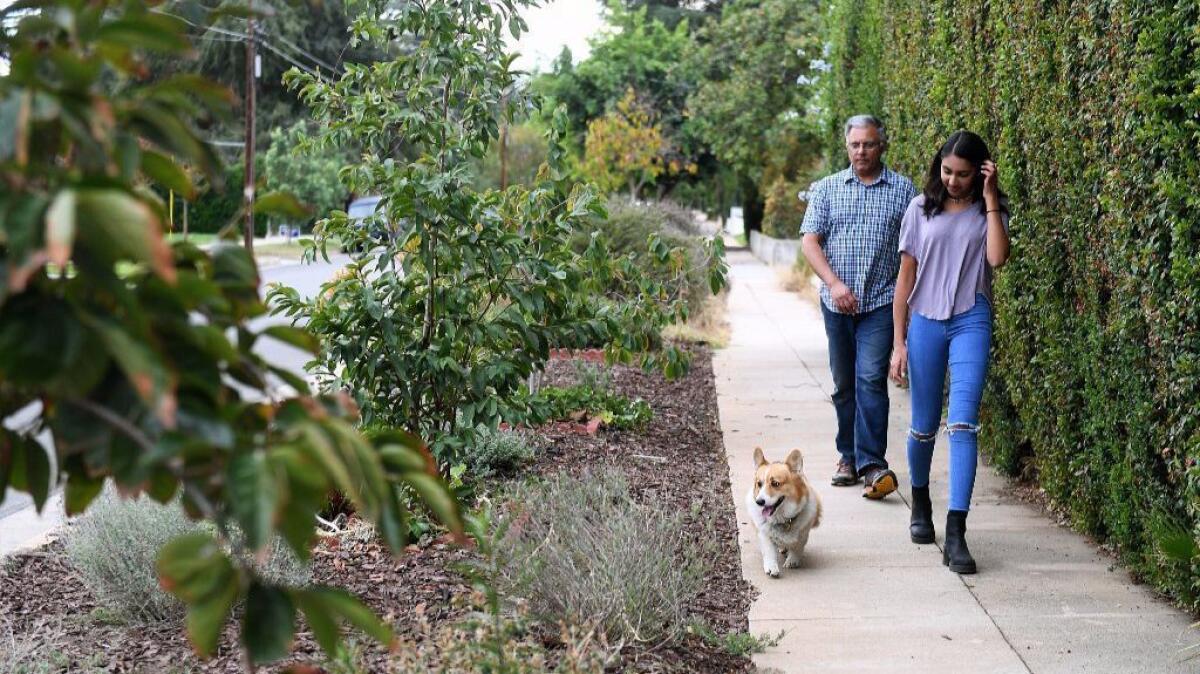
They also removed a large part of their lawn and replaced it with a permeable driveway that was elevated to allow water runoff to soak their garden.
When the pond needs to be drained and replaced, Sayeed adds the nitrogen-rich old water to their roses. And when they had a surplus of honey this year, he made beeswax candles and mead wine.
“We generate very little trash,” says Chatterjee, who also teaches a class on food justice. “Climate change has to start at a basic level.”
Chatterjee, who grew up in Kolkata, India, admits that when she was younger she felt intimidated by the ideal of the perfect, manicured garden. No more.
“We decided to do what makes us happy,” she says. “We wanted to create our own eccentric garden. Our neighbors have encouraged us to be crazier and crazier. We have a lovely community here. People walk by and comment, ‘What’s blooming today?’”
She often gives them fresh eggs and seeds. When the couple harvested 16 gallons of honey, they gave 10 gallons of it away. And when someone from down the street admires a plant, Chatterjee is quick to offer them a cutting.
This sense of community extends beyond their property line. The couple ripped out the lawn on the parking strip adjacent to their home and planted a communal garden. Here, their neighbors are free to pick lemons, pomegranates, persimmons, guava and herbs.
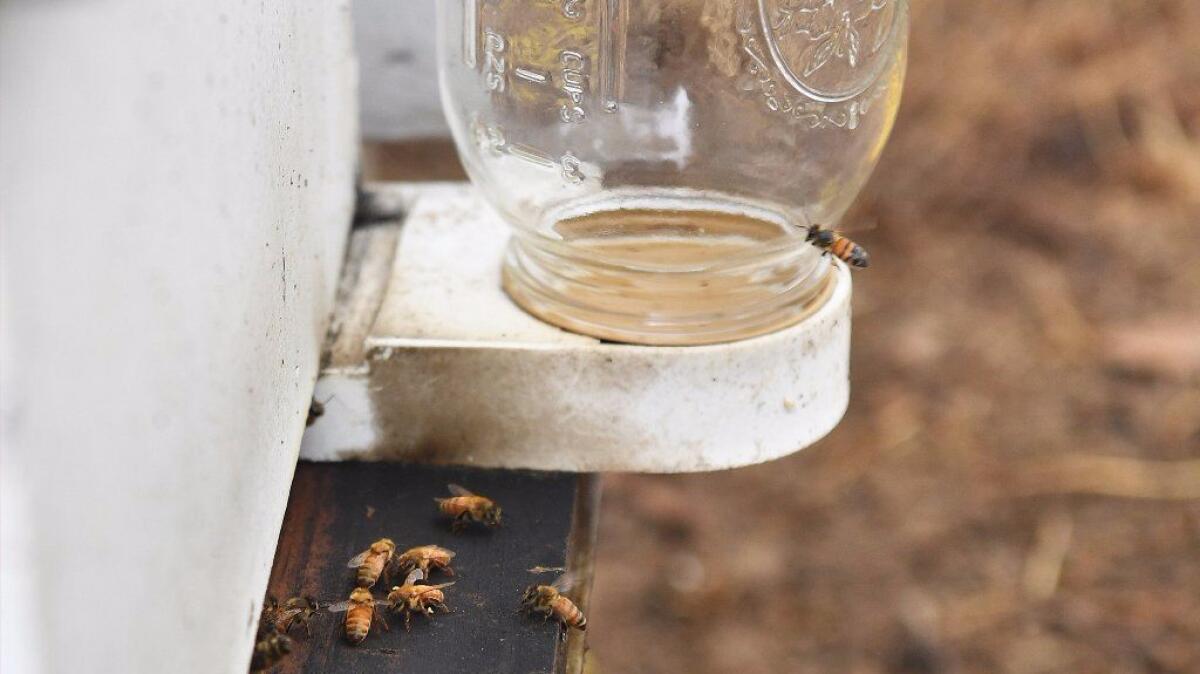
The unconventional nature of their garden means there are no formal raised beds or organized rows of plants. Lettuces are planted underneath the kitchen window. Herbs are sprinkled throughout the property. Vegetables and grapes grow randomly against the fence at the back of the property. Orchids, euphorbia and a multitude of drought-tolerant plants in pots from California, South Africa and Australia decorate the front and back yards.
Chatterjee says that nature provides a way for her to stay connected to her community and family.
“It allows me to be hospitable with my neighbors,” she says. “I’ve made friends through my garden. It makes me think about world history and our personal history. Every marriage is based on shared hobbies. This is our joint hobby.”
ALSO:
How a Hollywood set decorator channeled movie magic into her Altadena garden
Designers give Lloyd Wright’s Dorland house in Altadena a colorful, personal spin
The new modern garden: Flowers, edibles, chickens and creativity
Twitter: @lisaboone19
Follow our design and gardening boards on Pinterest

